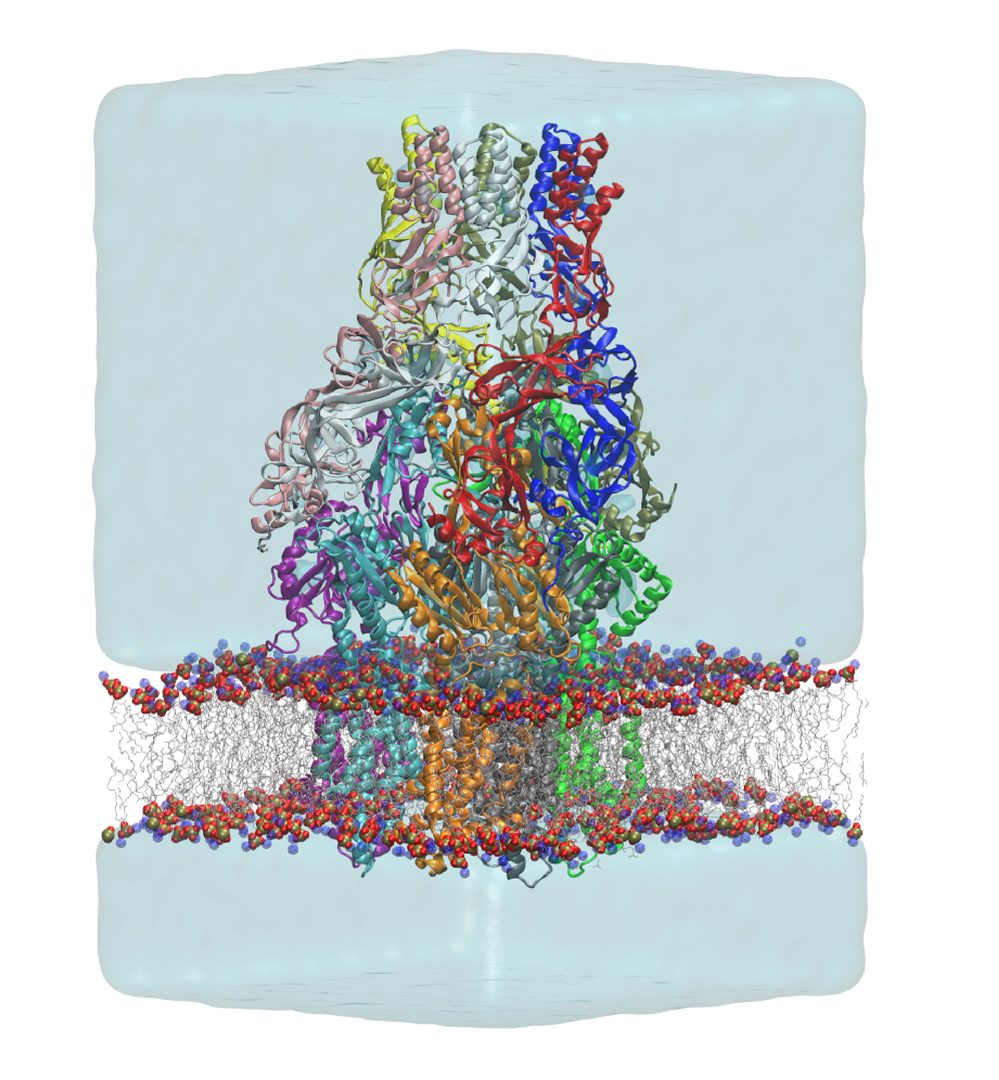UIC Physics professor Fatemeh Khalili receives allocation on Blue Waters supercomputer
May 5th, 2014
Categories: Applications, Visualization

About
Fatemeh Khalili, an assistant professor of physics at UIC, needing access to advanced supercomputing power to further her research in computational biophysics, recently applied for and received computational and data resources on the Blue Waters supercomputer at the National Center for Supercomputing Applications (NCSA) at the University of Illinois at Urbana-Champaign. Khalili’s application, “Modeling the Bacterial Copper Transport Efflux System,” is being developed with students in her Physics 491 class, and simulates protein systems. Ultimately, she wants to view the resulting 3D structure and its trajectory in stereo in the UIC Electronic Visualization Laboratory’s (EVL) CAVE2™ Hybrid Reality Environment.
UIC is a founding member of the Great Lakes Consortium for Petascale Computation (GLCPC), a collaboration of colleges, universities, national laboratories, and other educational institutions that facilitate the widespread and effective use of petascale computing. Faculty and research groups of GLCPC member institutions can apply for use of Blue Waters; GLCPC peer-reviews and makes allocations. Maxine Brown, director of the UIC Electronic Visualization Laboratory, is the UIC representative to and Past President of the GLCPC Board of Directors.
The NCSA Blue Waters petascale supercomputer is one of the world’s most powerful, capable of performing quadrillions of calculations every second and working with quadrillions of bytes of data. Its massive scale and balanced architecture enable scientists and engineers to tackle research challenges that could not be addressed with other computing systems. Khalili’s research project was one of 18 GLCPC projects awarded computational and data resources on Blue Waters last month.
The application “Modeling the Bacterial Copper Transport Efflux System” uses molecular dynamics simulations to study the transport cycle of the bacterial efflux system. Bacteria uses a complex of three proteins to expel toxic chemicals and antibiotics directly out of the cell. The heavy-metal efflux system uses the proton motive force to extrude toxic doses of copper or silver ions out of the cell. This application uses the structural information available for the heavy metal efflux system CusCBA to study the transport cycle of the system in atomic detail.
Information on the GLCPC.
The NCSA press release about the recent Blue Water allocations.
Details on Khalili’s project.